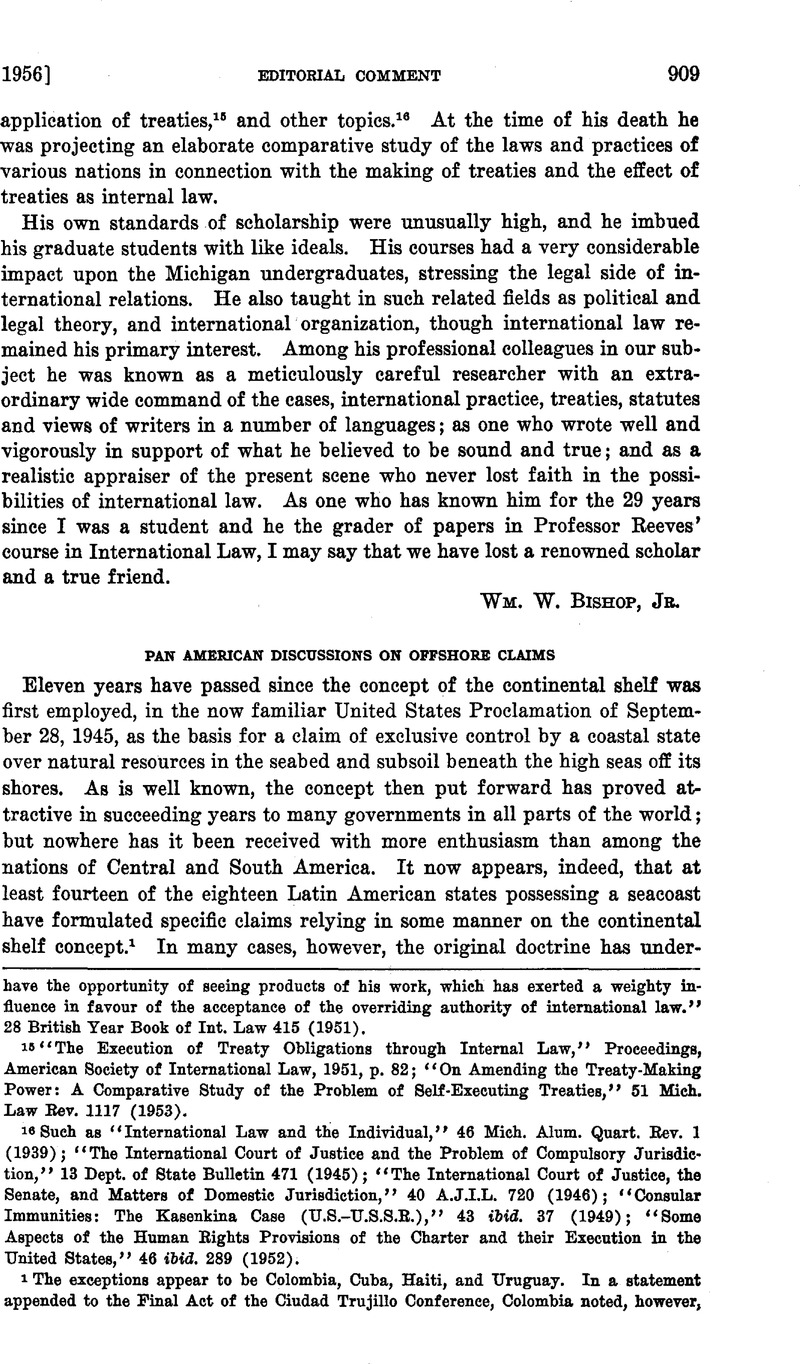No CrossRef data available.
Article contents
Pan American Discussions on Offshore Claims
Published online by Cambridge University Press: 28 March 2017
Abstract

- Type
- Editorial Comment
- Information
- Copyright
- Copyright © American Society of International Law 1956
References
1 The exceptions appear to be Colombia, Cuba, Haiti, and Uruguay. In a statement appended to the Final Act of the Ciudad Trujillo Conference, Colombia noted, however, that it would “consider whether or not it is advisable to change its attitude of prudent waiting, and issue its own regulations on certain matters.” Final Act of the Inter-American Specialized Conference on “Conservation of National Resources: The Continental Shelf and Marine Waters,” March 28, 1956 (Pan American “Union, Conference Series No. 50), p. 23.
2 For material relating to these incidents, see Selak, C. B., Jr., “Fishing Vessels and the Right of Innocent Passage,” 48 A.J.I.L. 627–635 (1954)Google Scholar; Case of Sauger et al., 49 ibid. 575–577 (1955); Peru, Ministry of Foreign Affairs, Memoria 1954–1955, pp. 13–24.
3 Resolution LXXXIV; 48 A.J.I.L. Supp. 128 (1954).
4 Resolution XIII, Feb. 3, 1956. Final Act of the Third Meeting (English translation, as published by the Pan American Union), pp. 36–38.
5 Some 40 technical papers and related statements submitted to the Conference are listed in the appendices to the Final Act. Many, such as those prepared for the United States by experts of the Geological Survey, the Navy Hydrographio Office, and the Fish and Wildlife Service, contain scientific data of great value.
6 Like the corresponding article of the International Law Commission’s 1953 draft, the phrasing of this paragraph is not above reproach. “The sea-bed and subsoil … to a depth of 200 meters” could mean a stratum of seabed and subsoil 200 meters in thickness measured downward from the bottom of the sea.




